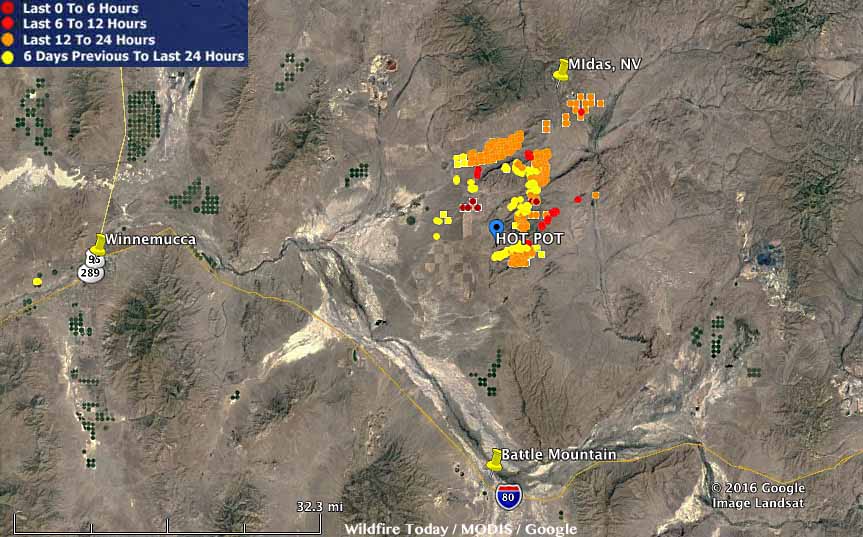Above: Hot Pot Fire burns near Midas, Nevada, July 3, 2016. Screen grab from video by Nevada Seismological Laboratory.

The image at the top of the article is a screen grab from a web cam operated by the Nevada Seismological Laboratory which has put together more than half a dozen time lapse videos of the fire. Below are a couple of examples; you can view the rest on YouTube. The videos are one minute long, and most of them cover about an hour of real time.
The first video begins about an hour after the fire started on July 2.
In the video below you can see retardant drops at 0:38 and 0:44 if you look VERY carefully. Full screen mode helps. The town of Midas, Nevada is in the tree-lined drainage at the lower-center of the picture.







